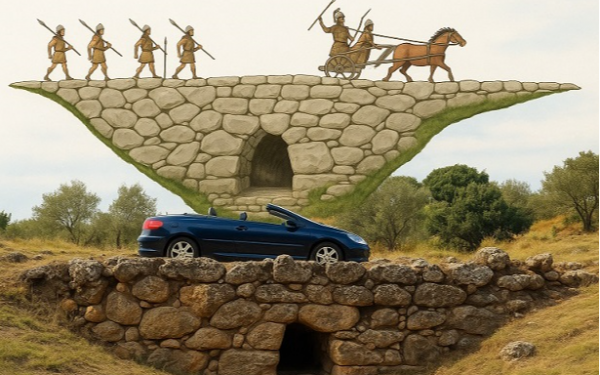The Bridge That Defied Time: Arkadiko’s Eternal Path
In the emerald folds of Argolis, Greece, hidden among olive trees and whispers of ancient winds, stands a relic not of stone alone—but of triumph. A bridge, older than empires, older than most written words: the Arkadiko Bridge.

Over 3,300 years ago, in the twilight of the Bronze Age, Mycenaean hands shaped limestone boulders—not with mortar, not with modern tools, but with raw precision and enduring intent. Between 1300 and 1190 BCE, they forged a path meant for warriors. Chariots once thundered across its 2.5-meter-wide spine; now, cars hum over it, as if borrowing time from ghosts.
This was no humble crossing. It connected the strongholds of Tiryns and Epidauros—arteries of war and strategy. And it was built not with hope, but with Cyclopean masonry: blocks so massive that ancient tales insisted only giants could lift them. Perhaps they were right. For what else but giants—or genius—could craft a structure that refuses to fall?
Empires rose and fell. Tongues changed, borders shifted, histories rewritten. But the Arkadiko Bridge stood firm—unshaken, unyielding, immortal.
No scaffolds. No repairs. Just quiet, eternal strength.
This is not just a bridge.
It is a testament.
A whisper from the past that roars louder than steel:
When humanity builds with purpose,
its legacy becomes stone—
and stone remembers.
